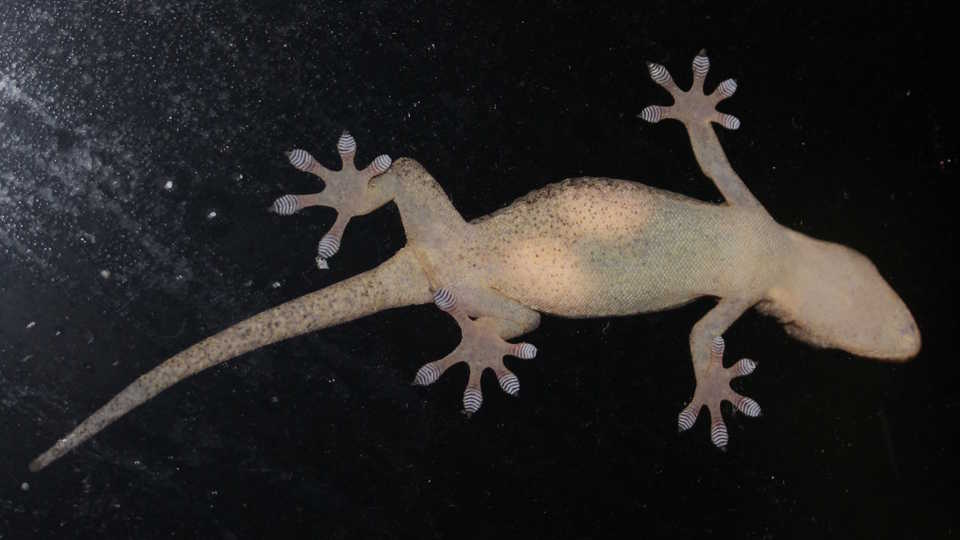Science News
Gecko Genes

What makes a gecko a gecko? Slicked back hair? A great deal on car insurance? Or perhaps 2.25 billion base pairs of DNA, some of which allow the diverse tetrapods to regenerate their tails and to climb on slick, vertical walls?
Yan Liu of Nantong University in China would likely favor that last answer… He and his team sequenced the entire genome of Schlegel’s Japanese gecko (Gekko japonicus), and they describe their results in a paper published in Nature this week. While related lizards such as the king cobra, American alligator, and green sea turtle have had their genomes sequenced, this is the first complete genome sequenced from the family Gekkonidae. Liu notes that while previous genome sequencing has “filled the genomic gap between amphibians and birds,” he hopes that adding gecko genomic data to the reptile family family tree will provide “valuable insights into the adaptive evolution of geckos as well as the genomic basis of their characteristic traits.”
Indeed, he seems to have isolated some of the most interesting gene families in the Japanese gecko. The scientists annotated 22,487 genes, labeling their general or specific purpose. Liu found that the Japanese gecko had many extra genes responsible for creating β-keratin (or beta-keratin): essential for creating beaks and claws in many lizard species, β-keratin makes the hairs or setae that allow geckos to climb walls. The team also studied the gene families associated with a gecko’s excellent night vision, sense of smell, and the unique ability among vertebrates to regrow their tails. Wouldn’t that be a neat trick for a human to pull off?
Using gecko DNA to create super-senses or even help humans regrow lost appendages is a long way off. For now, be content to know that Liu and his co-authors deepened our knowledge of gecko evolution, pushing back the time of their divergence from other reptiles to approximately 200 million years ago. Complete genome sequencing such as this has impacts on how we think of other lizards, shuffling species relationships of animals as diverse as the Burmese python and the entire crocodile family. As we slowly add to the available genetic data of related species, we untangle the branches of the tree of life.
Image:Alpsdake/Wikimedia